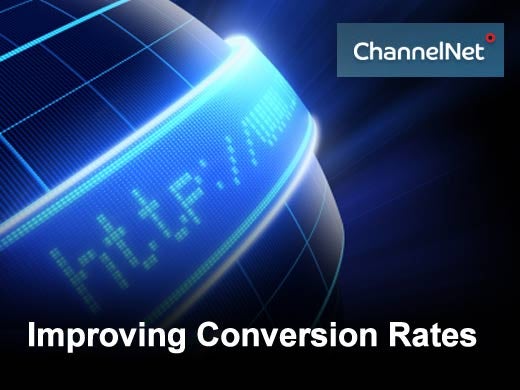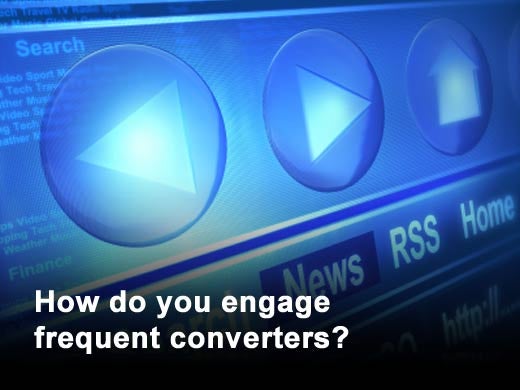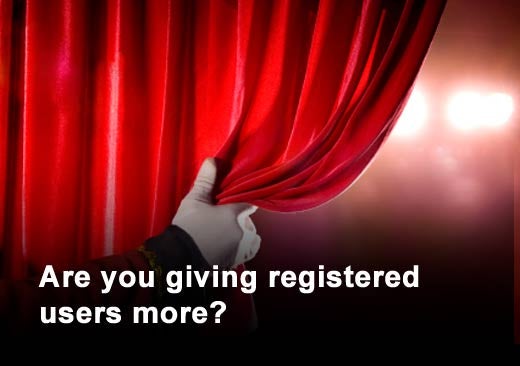Don’t miss out on a huge opportunity to engage your visitors, raise your conversions and learn how to better serve your customer base. Many of your visitors are ready to make the plunge. Are you listening to them or even asking yourself the right questions?
This slideshow features nine questions compiled by ChannelNet that may be used to help improve website visitor conversion rates.
Click through for nine questions you should ask to improve your website conversions rates, outlined by ChannelNet.
There are different sorts of visitors that are ready to make the conversion plunge on your website. It’s worth looking at them closely. Some visitors are researchers in various stages of their decision making process (that process is probably the “purchase funnel” for you buzz-word lovers) while others are ready to convert in other ways. All visitors also play the role of influencer, and this influencer role has exploded in importance in recent years thanks to the power of social media networks and websites. Regardless of the type of website you’re managing always put these valuable visitors in their proper place using customer segmentation. If you can’t immediately figure that out, then try inventing customer segments that seem reasonable. Mike Feuti, of ChannelNet, believes that paying a reputable company to help you profile and segment your customers is a smart idea.
Placing these returning visitors in a segment will allow you to see their behaviors better and ultimately serve them better. More reasons for this attention to detail are that returning visitors already know the basics about your site. Help them learn more, have a richer experience, and convert faster by targeting a different experience after their first visits. For example, you might replace instructional or introductory language with more relevant content on a second visit based on what you want them to do next.
Conversions can mean almost anything. The main rule is that conversions should be tailored to your website and business need, but otherwise you may invent them on your own. Example conversions include making purchases or signing up for e-mail and newsletters. Clicking a call-to-action button that sends the visitor to a specific page or even completing a download are conversions worth watching. For frequent converters, give them targeted rewards – these visitors are the most valuable, and it pays to engage them more effectively. Encourage infrequent purchasers to convert again by identifying them and then providing a more compelling offer.
It’s not good for a website to ever sit still. The experience should adjust to the customer’s behavior, while new ways to present information and calls to action are investigated. Learn about web optimization strategies like conversion rate optimization, social media optimizations and how to leverage Web analytics before your competition does.
Registered users are already signing in to your website. They have converted in at least one area (e.g. sign-ups, purchases, downloads, etc.) and probably have done so multiple times. Most sites devote a lot of real estate to user registration, once a visitor has signed up, they need to fill that valuable space with different content. A magazine site, for example, should remove the subscription sign-up content if an existing subscriber is visiting the site. If someone is already receiving your newsletter, use that sign-up space to promote something else.
Now we’re getting closer to the social media realm, but don’t be nervous because we’ll stay in the shallow end. For example, a blog that has a commenting section or a content page that offers a review feature falls under the category of user generated content (UGC). For visitors who contribute to reviews or discussions on your site, make it easy and rewarding to participate. Highlight other opportunities to join your site’s community with targeted layout changes or calls to action. Rewarding engaged visitors is a great way to build a community around your brand or any theme of your choosing.
People behave differently depending on when they visit your site, so target campaigns based on day and time. If you have offers, promotions, or content that expires at certain times, targeting content based on time of day or day of week will give you an easy relevance win. Inform visitors of upcoming shipping cutoffs, show different content to lunchtime visitors, and try day-of-week offers to help drive conversion metrics. You can expand this concept to your digital marketing campaigns when you are bringing in targeted or time-sensitive traffic to your website.
Show returning visitors content related to their last site search. If they are in a research phase, or if you have a large informational site, then this history can offer a great convenience to your visitor. While this bit of technical wizardry might put you off, you must find ways to incorporate the power of search in your website. A down to earth approach would be to make search functionality even more prominent for researchers who search frequently during their visits to your site.
Take every bit of information you can glean from your website in order to understand your visitor. If someone provided a job title as part of site registration or a request for more information, then focus your messaging based on those details. Create segments for different levels of responsibility to increase engagement and to identify decision makers or business owners. Speak to decision makers differently than decision influencers for greater relevance.
The potential to attract new customers via Local Search is enormous. For example:
40% of queries have Local intent
- 5% use the city and/or state name
- 2% use informal terms, like neighborhoods
- 0.5% use zip codes – (source: Ian White)
Even on the Internet, a visitor’s geographic location can make them likely to respond to different messages. Would you tell them something different if they were within a few miles of you? Even without a brick and mortar location responding with tailored messages to customers, especially if you know their region, is a powerful personalization that every website should use.
The power of local search explodes off the chart when we’re talking about mobile devices. Mobile searches are primarily going to pull their results from Local Search Engines.
Try not to be too hasty here. While Google does provide the lion’s share of search traffic there are many ways a visitor reaches your site. People who come from search engines may behave differently. They have used a keyword that you can use to align your solutions to their needs. For that matter, any traffic source may bring users with similar preferences. Use this knowledge to be more relevant to them. Make sure your content is valuable, relevant and engaging.












